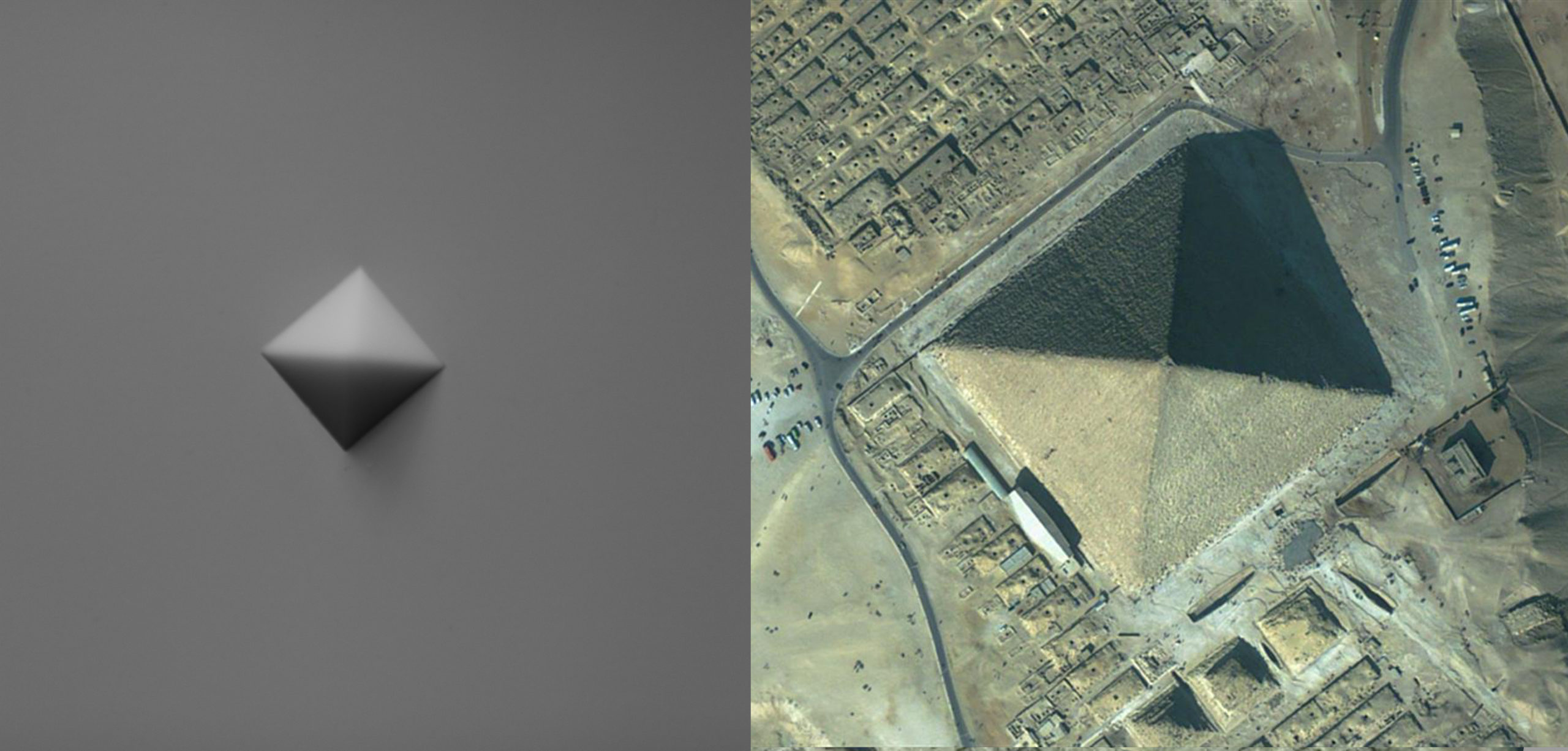
Geometry of pyramids
Polyhedrons are bodies bounded by flat plates in a 3-dimensional space. A polyhedron is called a convex if the section connecting two of its points passes inside the polyhedron. A good example of convex polyhedron is a cube or even a tetrahedron.
Polyhedrons can be grouped by number of sheets, peaks, and edges. Based on the Euler polyhedron theorem, convex polyhedrons are the f+v=e+2 relationship, where f is the number of sheets, v is the number of peaks, and this is the number of edges. Using this, we say that convex polyhedrons with a v tip with a f-sheet are elements of the primary combinatorial class (f,v)^C.
A lesser known but in some respect similar classification of polyhedrons is grouped according to the number of equilibrium positions. The equilibrium positions on the plates are called stable (S), the balances at the apex are unstable (U), and the equilibriums on the edges are called saddle-type equilibriums (H). Based on the Poincaré-Hopf theorem, the relationship S+U=H+2 is true, on the basis of which polyhedrons (S,U)^E are divided into primary equilibrium classes.
In addition to f≥S, v≥U, there is very little general correlation known about the relationship between the two classifications, even in the simplest classes there are plenty of open questions.
The topic of the thesis is the classification of class (5,5)^C (so-called pentaheders, also known as square pyramids, or pyramids) into classes (S,U)^E using matlab computer program. I was looking for answers to the following questions:
(a) CONJECTURE (J.H. Conway, 1969): There is no pentaheder in equilibrium classes (S,1)^E, (1,U)^E (S,U=1,2,3,4,5).
(b) CONJECTURE: Pentahedron exists in each class (S,U)^E (S,U=2,3,4,5).
With the help of the program, I received an affirmative answer to both questions, i.e. numerically confirmed J.H. Conway’s conjecture in 1969 and constructive means proved (b) conjecture. In support of the result of the latter, I also implemented a selected element of the identified 16 equilibrium classes with a 3D printer.